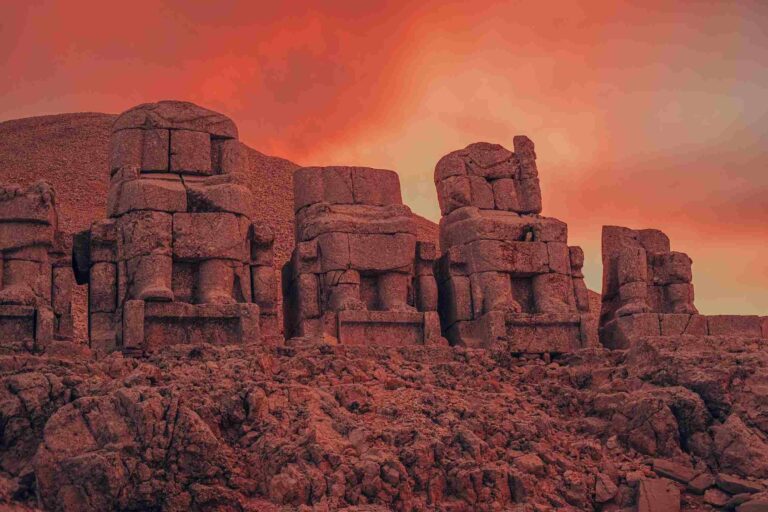Many aspects of modern technology can be traced back to oldest civilization. Numerous cultures have risen, flourished, and faded from prominence throughout history. Most people’s minds automatically go to the Greeks and Romans when you mention these cultures. This is due to the long-lasting effects both have had on modern society on a social, cultural, and political level.
Some of these civilizations, like the Egyptians, left behind impressive monuments that attest to their existence, like the Pyramids, while others vanished, only to be discovered centuries later by archaeologists. Our ability to identify the earliest, most influential, and culturally distinctive of these civilizations owes a great deal to the work of archaeologists. Here’s a look at the oldest civilization in the world.
Table of Contents
The 4 oldest civilizations in the world
The following are some of the oldest civilizations of human history:
The indigenous peoples of Australia
Before European colonizers arrived, Australia’s mainland and its islands were inhabited by the indigenous peoples of Australia. Sea levels were lower and land bridges were more extensive during their epoch, so it is assumed that they originated in Southeast Asia. According to studies, they established themselves as the world’s earliest culture.
There are traces of humans going back about 50,000 years; however, there is some evidence to suggest that they may have existed as early as 80,000 years ago. Even though they were nomads, Australia’s indigenous people had strong ties to particular locations they may have considered home.
The Europeans eventually spread across the whole continent and conversed over 200 distinct tongues. They have suffered terrible persecution ever since, and much of their heritage has been lost.
Mesopotamian civilization
Mesopotamia’s status as the world’s first civilization was long debated by academics. Its name, “between (meso) rivers (potamos),” refers to its location between the Tigris and the Euphrates. These countries, plus Turkey and Syria, make up what is now known as the Middle East. Miniature communities of early humans persisted for thousands of years, eventually evolving into scattered farming villages sometime around 8000 BCE.
Both the domestication of animals and the practice of agriculture flourished following the establishment of human settlements on fertile land. Around the year 3500 B.C., Uruk became the first of these communities to develop into a city. During its heyday, that location was home to somewhere in the neighborhood of 50,000 people.
Mesopotamia is well-known not only for its fertile farmland, but also for its thriving trade and the development of numerous industries, such as metalworking, masonry, and leatherworking. Its citizens are widely credited with developing the wheel, according to historians. However, the Persians conquered the area around 539 BCE and occupied it for centuries. 200 years later, when Alexander the Great conquered the Persian Empire, almost all of Mesopotamian cities and culture had been replaced.
The indus valley civilization
The Indus Valley Civilization, which spanned the territory between modern-day Afghanistan and Pakistan and northwest India, was the largest ancient civilization in terms of territory, at 1.25 million square kilometers. Early humans established farming communities in the Indus River basin.
Historians agree that early indicators of urbanization appeared around the year 3300 BCE. The Indus Valley Civilization reached its height around 2500 BCE, when its inhabitants lived in a number of large, well-developed cities. There is also evidence that suggests homes had their own bathrooms connected to an underground plumbing system. There was a written language used by the locals. They excelled in mathematics as well. Surprisingly, however, archaeologists have uncovered no evidence of warfare or widespread violence.
They managed to survive without protective gear and weapons for an estimated 700 years. They were a friendly and accommodating who engaged in friendly trade with neighboring cultures. Perhaps it was their apathy toward fighting that ultimately doomed them to defeat at the hands of Central Asian invaders. But some historians blame a catastrophic flood for their demise.
Jiahu civilization
The Jiahu community was established in what is now Henan Province, in ancient China’s central plain. This community was home to the oldest culture in the country. There are so many artifacts here that it must be an archaeologist’s paradise. Archaeologists have uncovered more than just pottery and tools from the ancient Chinese civilization; they have also discovered written evidence that the Chinese made the oldest wine in the world.
The bone flute, widely regarded as the earliest surviving example of a functional musical instrument, was one of the most remarkable finds. These flutes, which were likely used in rituals, were carved from the bone of the crane’s wing.
Around the year 5700 BCE, the settlement was wiped out when flooding from nearby rivers occurred. After abandoning their homeland, the Jiahu people have left no traces behind to suggest where they went or why they left.
Read also: The 6 most secret and still uncontacted tribes in the world in 2023












